Negative regulation of miRNA sorting into EVs is mediated by the capacity of RBP PCBP2 to impair the SYNCRIP-dependent miRNA loading
- PMID: 40601477
- PMCID: PMC12221297
- DOI: 10.7554/eLife.105017
Negative regulation of miRNA sorting into EVs is mediated by the capacity of RBP PCBP2 to impair the SYNCRIP-dependent miRNA loading
Abstract
While it is accepted that extracellular vesicles (EVs)-mediated transfer of microRNAs contributes to intercellular communication, the knowledge about molecular mechanisms controlling the selective and dynamic miRNA-loading in EVs is still limited to few specific RNA-binding proteins interacting with sequence determinants. Moreover, although mutagenesis analysis demonstrated the presence/function of specific intracellular retention motifs, the interacting protein/s remained unknown. Here, PCBP2 was identified as a direct interactor of an intracellular retention motif: CLIP coupled to RNA pull-down and proteomic analysis demonstrated that it binds to miRNAs embedding this motif and mutagenesis proved the binding specificity. Notably, PCBP2 binding requires SYNCRIP, a previously characterized miRNA EV-loader as indicated by SYNCRIP knock-down. SYNCRIP and PCBP2 may contemporarily bind to miRNAs as demonstrated by EMSA assays and PCBP2 knock-down causes EV loading of intracellular microRNAs. This evidence highlights that multiple proteins/miRNA interactions govern miRNA compartmentalization and identifies PCBP2 as a dominant inhibitor of SYNCRIP function in murine hepatocytes.
Keywords: RNA-binding proteins; cell biology; extracellular vesicles; miRNA; mouse.
© 2025, Marocco, Garbo et al.
Conflict of interest statement
FM, SG, CM, AC, LQ, GG, GS, CC, ML, AC, RP, GT, CB, MT No competing interests declared
Figures
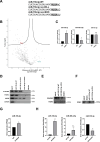

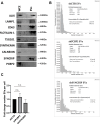
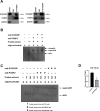

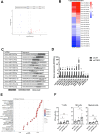

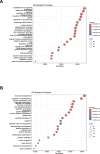

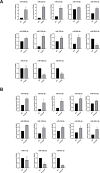




Update of
- doi: 10.1101/2024.11.15.623754
- doi: 10.7554/eLife.105017.1
- doi: 10.7554/eLife.105017.2
- doi: 10.7554/eLife.105017.3
Similar articles
-
Systematic proteomic and small RNA profiling of extracellular vesicles from cattle infected with a naturally occurring buparvaquone-resistant strain of Theileria annulata and from uninfected controls.Parasit Vectors. 2025 Jun 10;18(1):221. doi: 10.1186/s13071-025-06834-8. Parasit Vectors. 2025. PMID: 40495253 Free PMC article.
-
Defining the Parameters for Sorting of RNA Cargo Into Extracellular Vesicles.J Extracell Vesicles. 2025 Jul;14(7):e70113. doi: 10.1002/jev2.70113. J Extracell Vesicles. 2025. PMID: 40620070 Free PMC article.
-
[Influence and mechanism of extracellular vesicles derived from human dermal papilla cells on skin fibrosis in mice].Zhonghua Shao Shang Yu Chuang Mian Xiu Fu Za Zhi. 2025 Jun 20;41(6):559-568. doi: 10.3760/cma.j.cn501225-20240925-00348. Zhonghua Shao Shang Yu Chuang Mian Xiu Fu Za Zhi. 2025. PMID: 40588404 Free PMC article. Chinese.
-
MicroRNAs in extracellular vesicles: A potential role in cancer progression.Cell Signal. 2024 Sep;121:111263. doi: 10.1016/j.cellsig.2024.111263. Epub 2024 Jun 17. Cell Signal. 2024. PMID: 38897529 Review.
-
Approaches and Challenges in Characterizing the Molecular Content of Extracellular Vesicles for Biomarker Discovery.Biomolecules. 2024 Dec 14;14(12):1599. doi: 10.3390/biom14121599. Biomolecules. 2024. PMID: 39766306 Free PMC article. Review.
References
-
- BaseSpace Labs . Illumina; 2023. https://www.illumina.com/products/by-type/informatics-products/basespace...
-
- Battistelli C, Garbo S, Riccioni V, Montaldo C, Santangelo L, Vandelli A, Strippoli R, Tartaglia GG, Tripodi M, Cicchini C. Design and functional validation of a mutant variant of the LncRNA HOTAIR to counteract snail function in epithelial-to-mesenchymal transition. Cancer Research. 2021;81:103–113. doi: 10.1158/0008-5472.CAN-20-1764. - DOI - PMC - PubMed
-
- Broermann A, Schmid R, Gabrielyan O, Sakowski M, Eisele C, Keller S, Wolff M, Baum P, Stierstorfer B, Huber J, Krämer BK, Hocher B, Streicher R, Delić D. Exosomal miRNAs as potential biomarkers to monitor phosphodiesterase 5 inhibitor induced anti-fibrotic effects on CCl4 treated rats. International Journal of Molecular Sciences. 2020;22:382. doi: 10.3390/ijms22010382. - DOI - PMC - PubMed
-
- Conigliaro A, Amicone L, Costa V, De Santis Puzzonia M, Mancone C, Sacchetti B, Cicchini C, Garibaldi F, Brenner DA, Kisseleva T, Bianco P, Tripodi M. Evidence for a common progenitor of epithelial and mesenchymal components of the liver. Cell Death and Differentiation. 2013;20:1116–1123. doi: 10.1038/cdd.2013.49. - DOI - PMC - PubMed
MeSH terms
Substances
Associated data
- Actions
Grants and funding
- IG26290/Associazione Italiana per la Ricerca sul Cancro
- IG24955/Associazione Italiana per la Ricerca sul Cancro
- 2020/Istituto Pasteur-Fondazione Cenci Bolognetti
- RIBOMYLOME_309545/ERC_/European Research Council/International
- 10.3030/855923/ERC_/European Research Council/International
- 10.3030/727658/H2020 European Research Council
- INFORE_825080/H2020 European Research Council
- RM12218166AEFC72/Sapienza University of Rome
- MA12117A5D73CC9C/Sapienza University of Rome
- PNR 2021/SEED PNR-Finanziamento di progetti di ricerca su temi di interesse trasversale per il
- PRIN: progetti di ricerca di rilevante interesse nazionale-Bando 2022ETPX42/Ministero dell'Università e della Ricerca
LinkOut - more resources
Full Text Sources

